Abstract
A total of 35 firemen involved in fighting a fire in a factory in which polyurethane foam was made were exposed to fumes of toluene di-isocyanate from two large storage tanks which were damaged during the fire, resulting in massive spillage. Most of the men experienced symptoms during the fire or during the three weeks after it. The symptoms were mainly gastrointestinal, respiratory, or neurological. Altogether 15 men described gastrointestinal symptoms which subsided within two days of onset. Respiratory symptoms were described by 31 men and were most pronounced during the three days after the fire, thereafter tending to improve. The neurological findings are described separately. When the men were reviewed at six months there was a suggestion that some of them might have sustained long-term damage to the respiratory tract, and almost four years later 20 men had persistent respiratory symptoms. Serial measurements of ventilatory capacity revealed a marked decline in the first six months although this was not sustained.
Full text
PDF
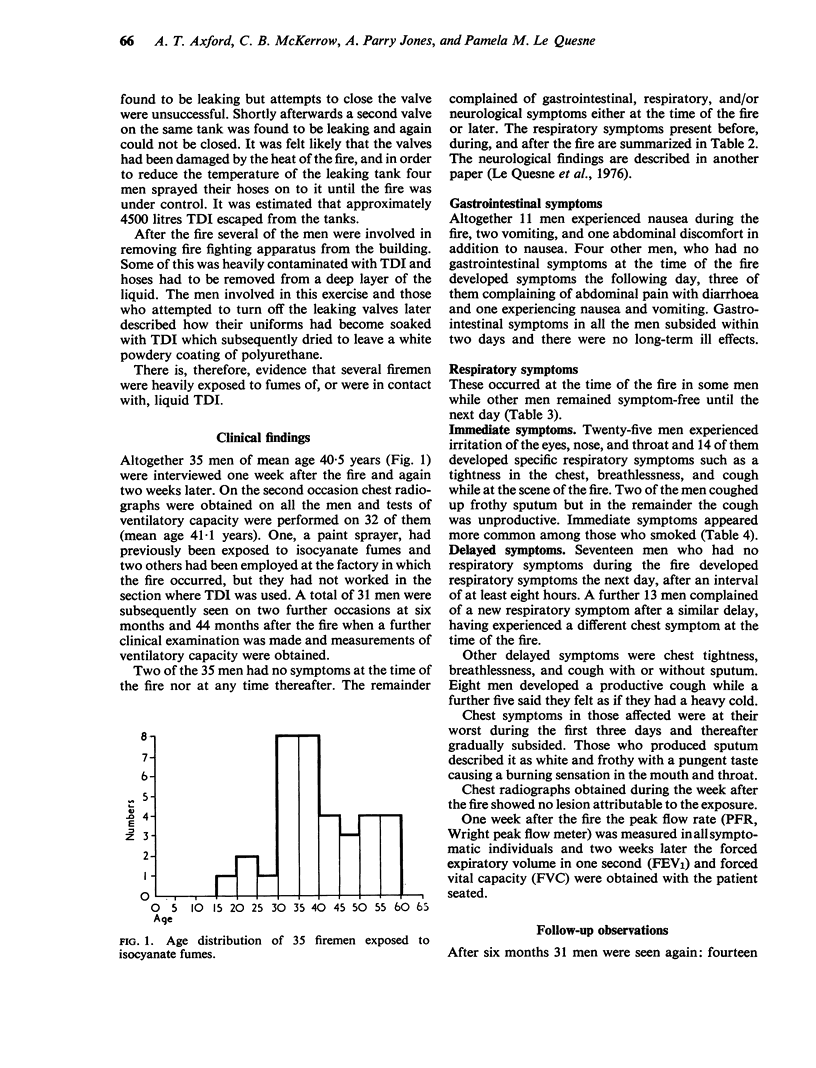
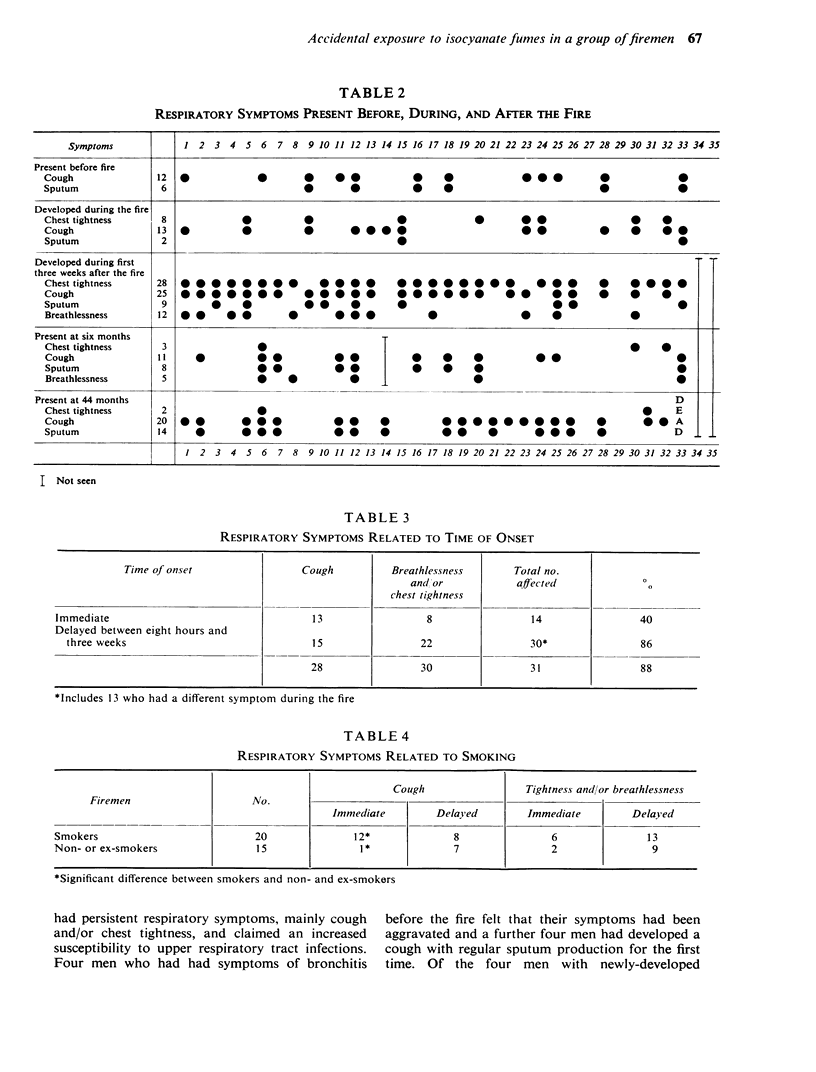
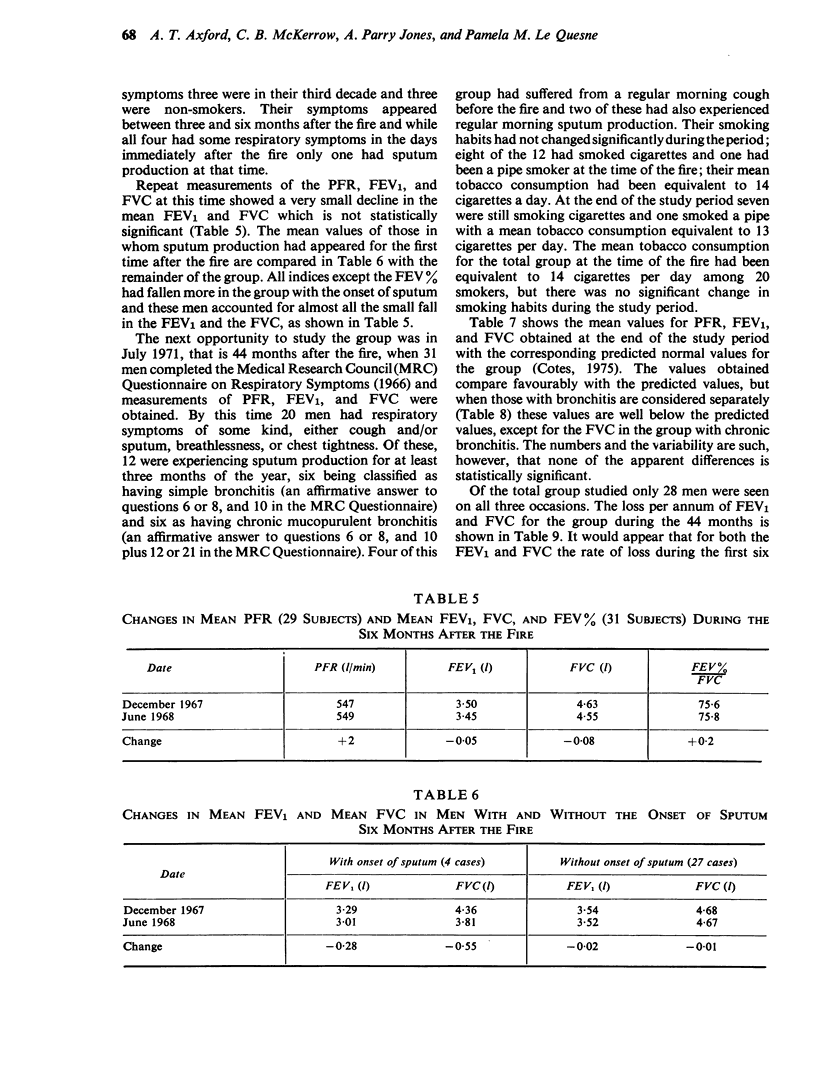
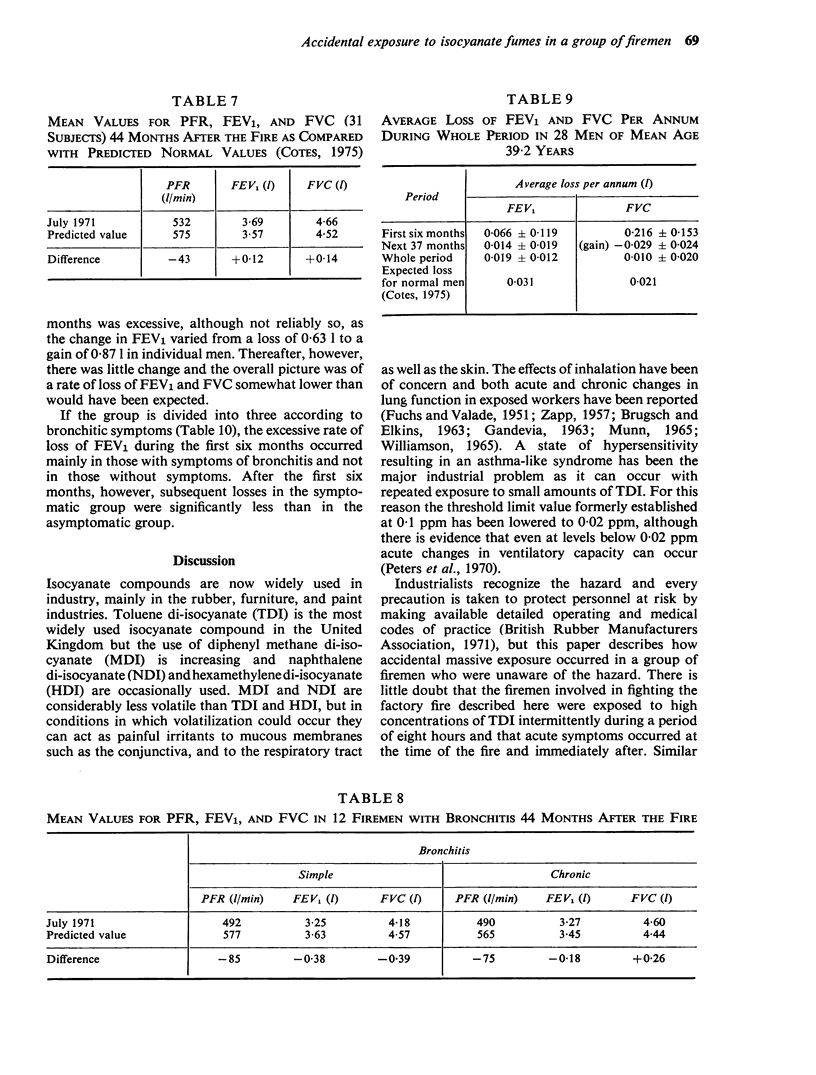

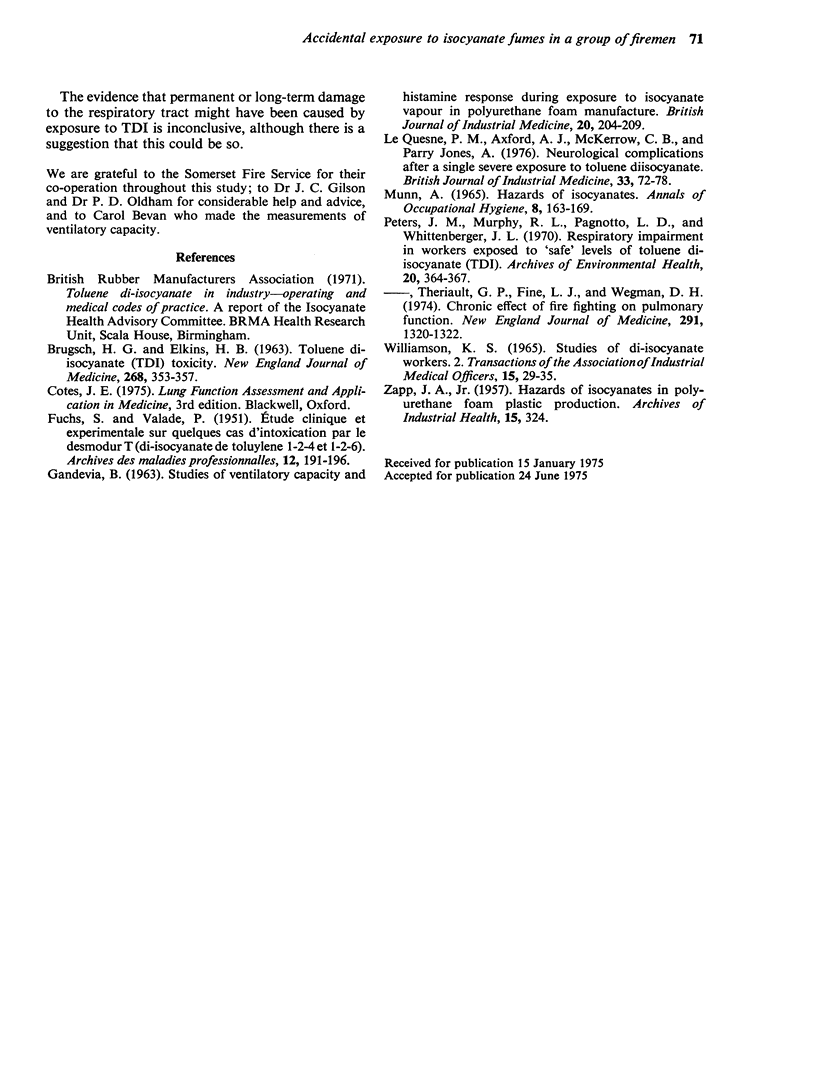
Selected References
These references are in PubMed. This may not be the complete list of references from this article.
- BRUGSCH H. G., ELKINS H. B. Toluene di-isocyanate (TDI) toxicity. N Engl J Med. 1963 Feb 14;268:353–357. doi: 10.1056/NEJM196302142680705. [DOI] [PubMed] [Google Scholar]
- FUCHS S., VALADE P. Etude clinique et expérimentale sur quelques cas d'intoxication par le desmodur T (diisocyanate de toluylène 1-2-4 et 1-2-6). Arch Mal Prof. 1951;12(2):191–196. [PubMed] [Google Scholar]
- GANDEVIA B. STUDIES OF VENTILATORY CAPACITY AND HISTAMINE RESPONSE DURING EXPOSURE TO ISOCYANATE VAPOUR IN POLYURETHANE FOAM MANUFACTURE. Br J Ind Med. 1963 Jul;20:204–209. doi: 10.1136/oem.20.3.204. [DOI] [PMC free article] [PubMed] [Google Scholar]
- Le Quesne P. M., Axford A. T., McKerrow C. B., Jones A. P. Neurological complications after a single severe exposure to toluene di-isocyanate. Br J Ind Med. 1976 May;33(2):72–78. doi: 10.1136/oem.33.2.72. [DOI] [PMC free article] [PubMed] [Google Scholar]
- Peters J. M., Murphy R. L., Pagnotto L. D., Whittenberger J. L. Respiratory impairment in workers exposed to "safe" levels of toluene diisocyanate (TDI). Arch Environ Health. 1970 Mar;20(3):364–367. doi: 10.1080/00039896.1970.10665605. [DOI] [PubMed] [Google Scholar]
- Peters J. M., Theriault G. P., Fine L. J., Wegman D. H. Chronic effect of fire fighting on pulmonary function. N Engl J Med. 1974 Dec 19;291(25):1320–1322. doi: 10.1056/NEJM197412192912502. [DOI] [PubMed] [Google Scholar]
- Williamson K. S. Studies of diisocyanate workers. (2). Trans Assoc Ind Med Off. 1965 Jan;15(1):29–35. [PubMed] [Google Scholar]
- ZAPP J. A., Jr Hazards of isocyanates in polyurethane foam plastic production. AMA Arch Ind Health. 1957 Apr;15(4):324–330. [PubMed] [Google Scholar]


